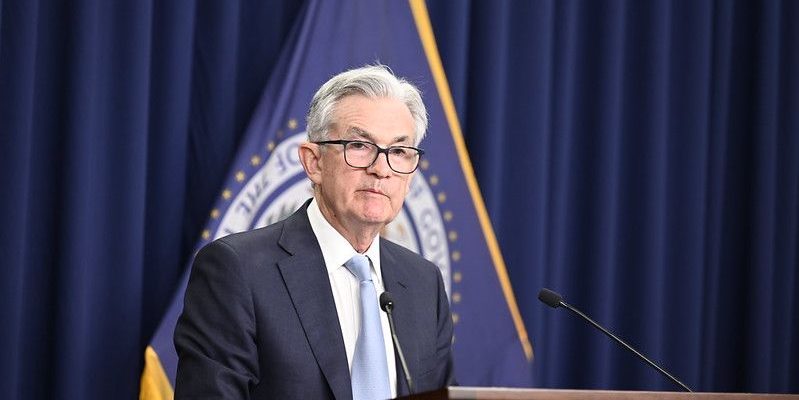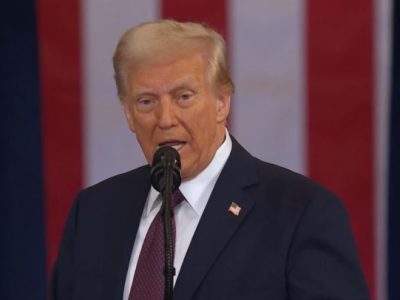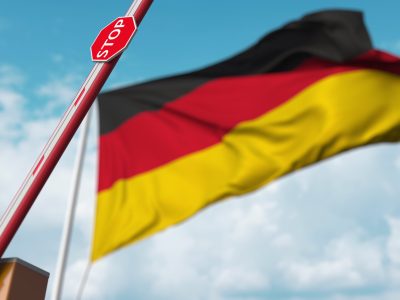
The biggest central banks around the world are in the spotlight this week as the Federal Reserve, Bank of Japan, and Bank of England hold their final policy meetings of 2024.
These upcoming meetings will set the tone for monetary policy in 2025, with inflation, growth, and global uncertainties influencing their decisions.
Investors will have to pay attention to the underlying messages, rather than the final decisions, in order to extract the most insights about the economic outlooks for next year.
Here’s what to expect from the Fed, BoJ, and BoE meetings this week.
Federal Reserve: slowing the pace of rate cuts
The Federal Reserve is widely expected to cut its benchmark interest rate by 0.25 percentage points to 4.3% at its meeting on Wednesday.
According to the CME Fedwatch tool, markets are pricing in a 97% chance of a rate cut.
This would mark the third consecutive rate reduction, following cuts in September and November.
However, Fed policymakers have signaled that the pace of cuts is likely to slow next year. Persistent inflation and stronger-than-expected economic growth are the main reasons for this hawkish tone.
Inflation remains above the Fed’s 2% target, with core inflation stuck at 2.8% annually since March.
While far below the 9.1% peak in 2022, inflation has proved more resilient than anticipated.
At the same time, the U.S. economy grew at a solid 2.8% annualized rate in Q3 2024, thanks to strong consumer spending and labor market resilience.
These factors make the Fed hesitant about easing too aggressively.
Fed Chair Jerome Powell is expected to highlight a data-driven approach in his post-meeting comments.
Analysts predict the Fed will reduce rates more gradually in 2025, possibly cutting at every other meeting instead of each one.
The Summary of Economic Projections (SEP) revisions will provide a roadmap for what’s next.
Futures markets currently price in two cuts next year, down from the four previously forecasted.
Concerns about inflationary pressures from President-elect Donald Trump’s proposed trade and fiscal policies, such as tariffs and corporate tax changes is what keeps policymakers more reluctant to loosen monetary policy.
Jerome Powell’s language will be the most important clue here. It is likely that the chairman of the Fed will want to sound more hawkish regarding their progress on inflation and could also downplay Trump’s influence to keep markets calm.
Bank of Japan: is a surprise rate hike on the table?
The Bank of Japan will conclude its two-day meeting on Thursday, with markets divided on whether a rate hike is imminent.
Japan’s benchmark interest rate, currently at 0.25%, has been unchanged since July, but recent economic data suggests the BOJ may be preparing to act soon.
A CNBC survey found that 54% of economists expect the BOJ to keep rates steady this week, with a hike likely in January.
Japan’s inflation has stayed above the BOJ’s 2% target for 30 consecutive months, driven by wage growth and rising prices.
Regular wages have been increasing at an annual rate of 2.5% to 3%, supporting household spending.
However, concerns persist about the sustainability of wage gains, especially among small and medium-sized businesses.
BOJ Governor Kazuo Ueda has indicated that another rate hike is “nearing,” but uncertainties about US policy under President-elect Trump and upcoming spring wage negotiations could prompt the BOJ to wait.
The yen, currently trading around 154 per US dollar, is the key to BOJ’s decision-making.
A weaker yen has boosted Japan’s exports and tourism but also risks fueling further inflation.
There is a high chance that the yen will continue to strengthen against the U.S. dollar as the country’s monetary policies continue to diverge.
Bank of England: too many uncertainties
The Bank of England is expected to leave its base interest rate at 4.75% during its meeting on Thursday, following rate cuts in August and November.
While inflation briefly fell below the BoE’s 2% target earlier this year, it jumped to 2.3% in October and is expected to rise further to 2.7% in November.
This unexpected rebound, driven by higher energy costs, has complicated the central bank’s path to monetary easing.
Fiscal policy changes introduced in the Labour Budget have added to inflationary pressures.
The budget’s increase in employers’ national insurance contributions (NICs) is a key concern, as it raises costs for businesses and risks further price hikes or job cuts in low-margin sectors like retail and hospitality.
BoE Governor Andrew Bailey has identified NICs as the “biggest issue” impacting the economy post-budget.
Despite a slight contraction in GDP (-0.1%) in October, economists expect growth to rebound as Budget-related uncertainties dissipate.
Analysts project four rate cuts in 2025, bringing the base rate to 3.75% by year-end.
However, risks are skewed toward fewer cuts if inflation remains stubborn.
What to expect
This week’s central bank meetings highlight the challenges of balancing inflation control with economic growth.
The Federal Reserve is expected to slow the pace of rate cuts heading into 2025, due to persistent inflation and fiscal uncertainties under a new U.S. administration. Jerome Powell’s tone during his press conference will provide many clues.
The Bank of Japan faces pressure to normalize policy but may delay action to assess wage trends and global risks.
Meanwhile, the Bank of England faces hard decisions due to inflationary pressures from fiscal policies and a fragile economic outlook.
The post What to expect from the Fed, BoJ, and BoE meetings this week appeared first on Invezz









